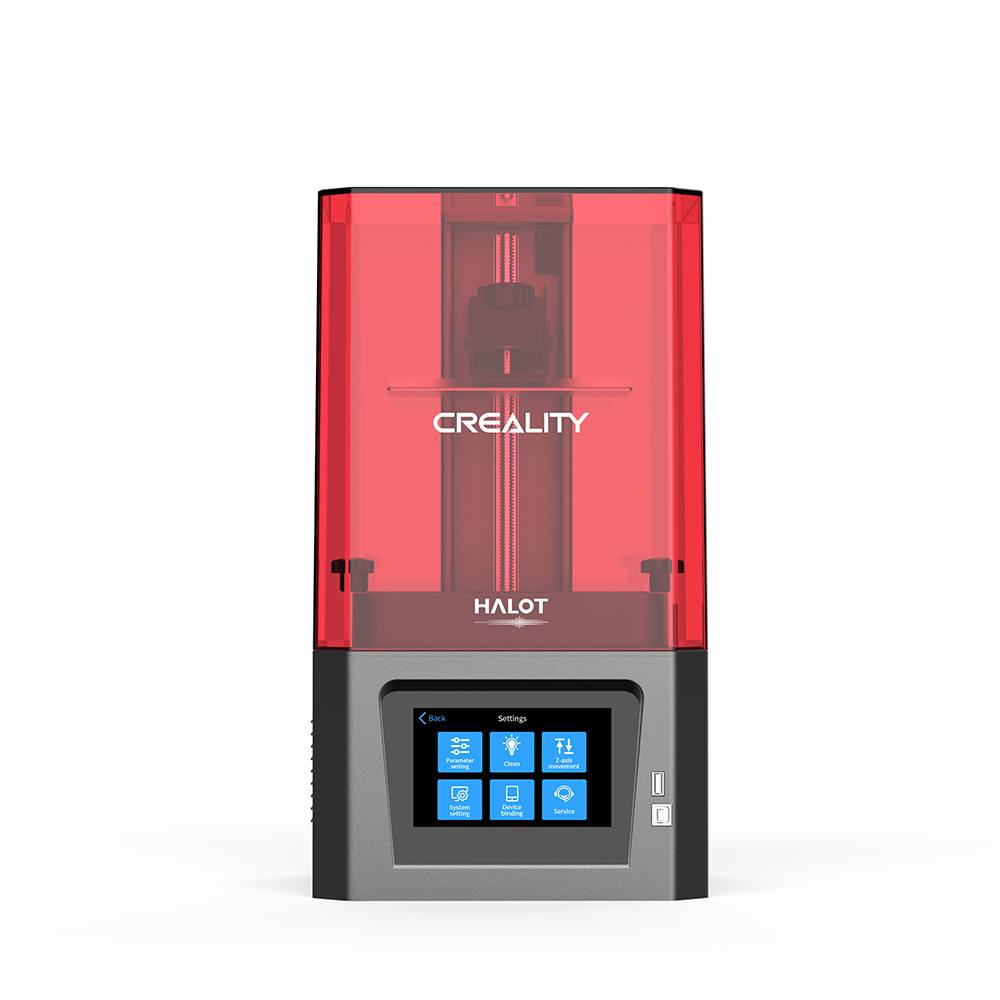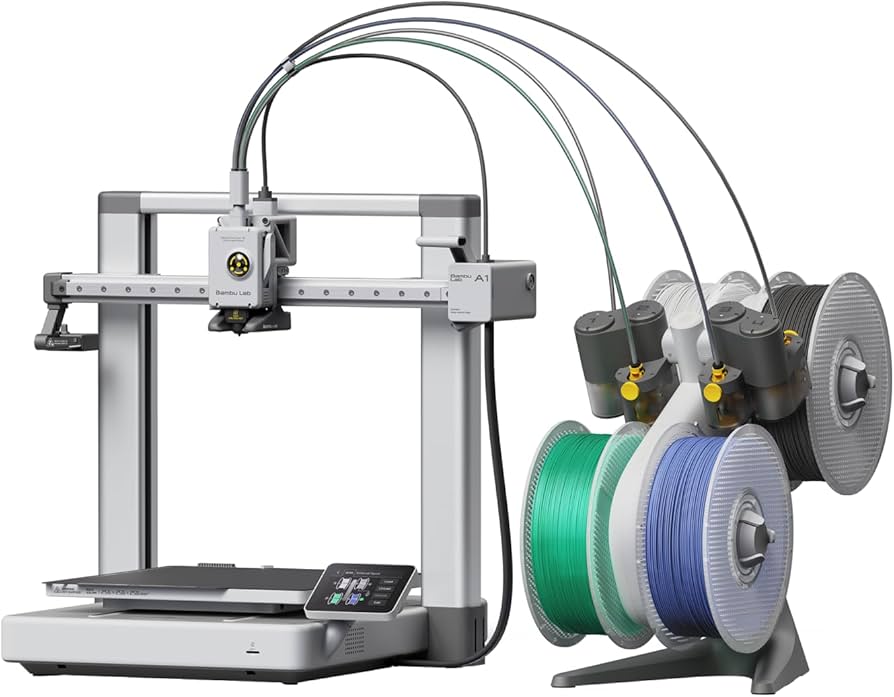Compare Halot One vs A1
Comparison between the best 3D printers
Choose the best 3D printer at the best price. The cheapest 3D printers are here.
Buy a 3D printer here with 3D Fila.
 |
 |
|
| Model | Halot One |
A1[BUY A1] |
| Printing Material | Resin | Filament |
| Buy Resin for Creality 3D Halot One | Buy Filament forBambu Lab A1 | |
| Estimated price | $250,00 | $700,00 |
| Manufacturer | Creality 3D | Bambu Lab |
| Release Year | 2021 | 2023 |
| Print Volume [mm] | 127x80x160 | 256x256x256 |
| Printer Size [mm] | 221x221x404 | 385x410x430 |
| Weight [kg] | 7,1 | 8,3 |
| Power Loss Recovery | NO | YES |
| Maximum Resolution [mm] | 2k | 0,1 |
| Processor | ||
| Display | Touchscreen 3,5 | |
| Power Supply | 350 W | |
| Connectivity | Wi-Fi, Bambu-Bus, Cartão Micro SD | |
| Operating systems | Windows, Mac, Linux | Windows, Linux, Macbook |
| Date of registration in the system | 2022-10-11 | 2024-07-17 |
| Release date | 2021 | 2023 |
| Extra features | Crealitys Halot-One printer stands out with several innovative features. It has a high-resolution touchscreen, providing an intuitive and responsive interface. Its quiet printing capability is remarkable, ideal for environments where noise is a concern. Assembly and setup are simple, with automatic functions facilitating quick start. Among its features, remote monitoring and adjustments via the Creality Cloud app stand out, simplifying remote print management. Replacing the FEP in the resin vat is easy, and the printer even includes extra FEP sheets. Top cover removal detection increases safety by automatically pausing printing. In addition, its integral light source promises high uniformity, optimizing print quality. | The BambuLab A1 printer features fully automatic calibration, multi-color printing with the AMS system, active flow rate compensation, quick nozzle change with a clip, active motor noise cancellation, a build volume of 256x256x256 mm³, a maximum extruder temperature of 300°C, and a heated bed of up to 100°C. In addition, it has high precision, a machine health management system and an intuitive 3.5-inch touchscreen interface. |
| Support for multiple colors and materials (AMS and CFS) | NO | YES |
Notes * |
||
| Cost-benefit | 8 / 10 | 7 / 10 |
| Hardware | 0.6 / 10 | 4.8 / 10 |
| Tela | . | . |
| Print volume | 3 / 10 | 4 / 10 |
| Performance | 9 / 10 | 4 / 10 |
| [BUY A1] |
Conclusion |
| In comparing the Creality 3D Halot One and the Bambu Lab A1, we can draw several key conclusions that highlight the strengths and weaknesses of each 3D printer. The Creality 3D Halot One, priced lower, boasts a user-friendly design with intuitive features, a high-resolution touchscreen, and simplified setup processes. Its compact print volume makes it a suitable choice for small projects, and it excels in noise reduction, making it ideal for home or office use. However, it lacks features like power loss recovery and multi-material support, which may limit its versatility. Conversely, the Bambu Lab A1, while more expensive, offers a significantly larger print volume and advanced features such as automatic calibration, multi-color printing capabilities, and active flow rate compensation. Its robust design caters to users who require more flexibility and precision in their projects, making it ideal for more extensive and complex prints. The inclusion of power loss recovery adds an extra layer of reliability, crucial for lengthy printing tasks. In terms of overall performance, both printers score well, but the A1 presents a more advanced hardware profile and versatile connectivity options, making it suitable for a wider range of applications. Ultimately, the choice between the two will depend on the user's specific needs: the Halot One appeals to budget-conscious consumers wanting a reliable option for smaller prints, while the Bambu Lab A1 is aimed at those who prioritize advanced features, print volume, and versatility, despite the higher price tag. |

